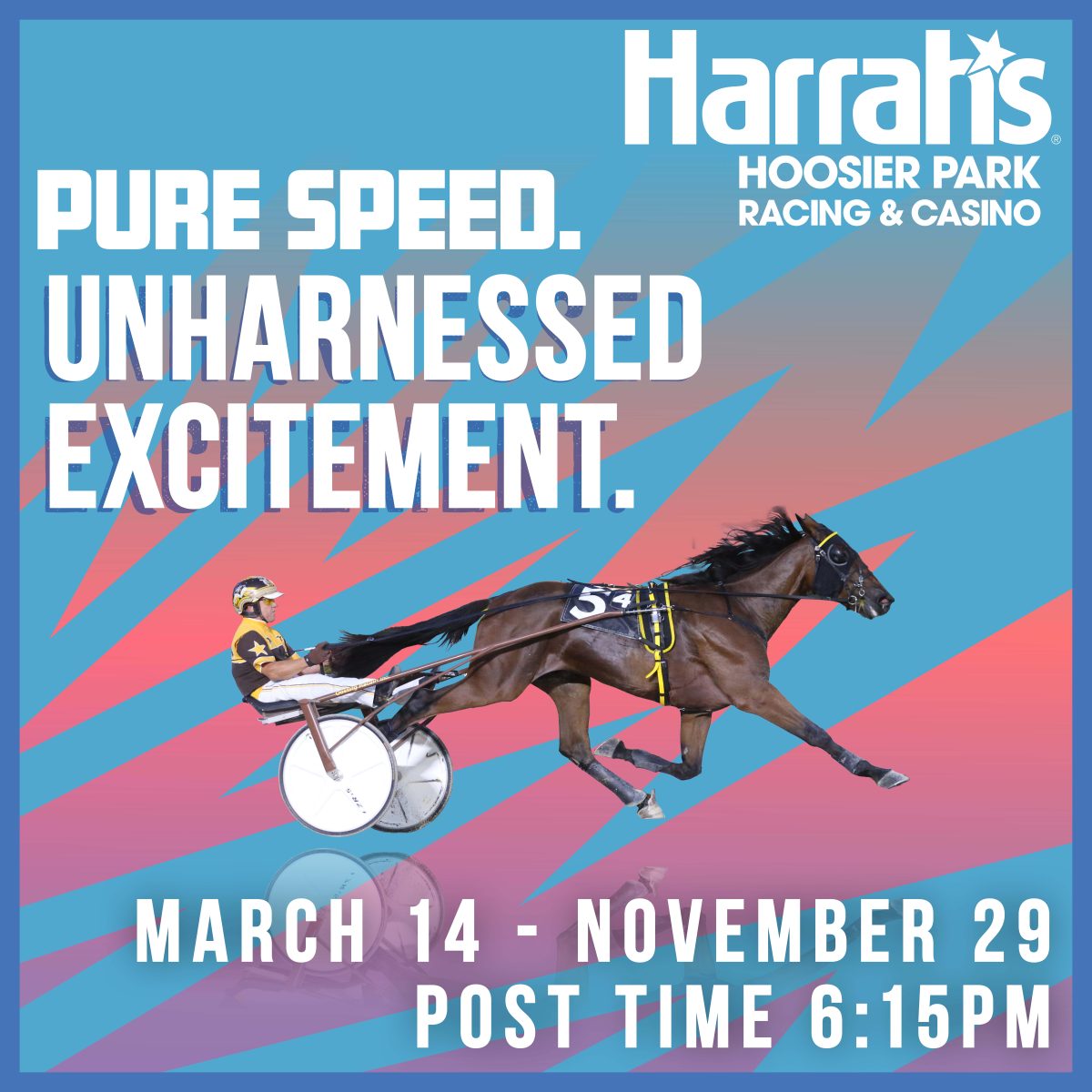Unearthing some real gems from early Hambletonians, Part 2
by John Berry
Part 1 ishere.
In the last Mane Attraction, we unearthed some of the gems from the first five Hambletonians remembrances of great horsemen of the past like Nat Ray, Billy Leese, Marvin Childs, Tom Berry and Walter Cox; all sadly forgotten today.
After Cox retired from active participation, he still kept an eye on the training operations for the Good Time Stable while engaging Chase Dean to handle the driving for the stable.
Back about 45 years ago, I was fortunate to catch up to Dean, approaching 90 years of age, and his remembrances about the early days of the Hambletonian were startling.
Honoring his memory, and others that provided the grand history of our sport, here is part 2 of unearthing gems from early Hambletonian events.
On Aug. 14, 1931, Calumet Butler won the sixth Hambletonian contested at Good Time Park, having won the second and third heats after finishing third in the opening heat, which was won by Keno, with his 1-3-2 heat performances earning him second money.
Keno, driven by Fred Egan (and, ironically, owned by a gent named John Berry), won the first heat in 2:04 1/4 while Calumet Butler swept the next two in 2:03 1/4 and 2:05 1/4, respectively. Keno lost the final heat by a nose! Calumet Belricka (2-4-4) earned third money while Charlotte Hanover finished fourth.
Nedda Guy, the winterbook favorite and the heavy favorite in the auction pools on race day, suffered an injury sometime during the first two heats after finishing fifth and then second and had to be withdrawn from what proved to be the final heat.
Only six had entered for this year’s event — the smallest field yet — with the purse being a healthy $48,071.39, despite the ongoing depression.
Bred and owned by Calumet Farm, then a leading breeder of standardbred horses, Calumet Butler was driving by Dick McMahon and became the first maiden to win this coveted of all races.
THE UNEARTHED GEMS: Breeder/owner William M. Wright was unable to be at the race after suffering a stroke and was in a coma and “on his deathbed” in Lexington, KY, never to know that his most cherished ambition of winning the Hambletonian had been accomplished.
After the death of Wright, Calumet Butler was sold to European interests, and, eventually, the farm disposed of all of its trotting horse interests, devoting to the development of thoroughbred horses, becoming one of the few farms that had a Hambletonian winner and a Kentucky Derby winner.
Winning driver McMahon, by the way, became superintendent of Calumet Farms.
The favorite Nedda Guy, owned by Wiliam H. Cane, as the betting favorite, was subjected to so much fan objection upon her being scratched from the third heat that the horse had to be paraded in front of the crowd to prove its lameness.
The 1932 Hambletonian, worth $45,489.26, was won by The Marchioness in a four-heat marathon, with the filly taking the first heat in 2:04 1/2 and fourth heat in 2:05 1/2 – :28, after Hollyrood Dennis won the second stanza in 2:01 1/4 and Invader took the third heat in 2:04 1/4.
Becoming the third filly in this seventh Hambletonian to capture the crown, The Marchioness was driven by her trainer Will Caton for owner Mrs. Ralph Keeler.
Invader, driven by Lyman Brusie, earned second money — 2-3-1-3 in the four heats — Hollyrood Dennis was third — his four heats 7-1-6-2 — for Will Crozier.
Calumet Crusader, Brevere and Calumet Chuck also earned checks in the septet of trotters.
THE UNEARTHED GEMS: In winning the second heat in 2:01 1/4, Hollyrood Dennis, trotted the fastest mile to date in the Hambletonian; a record that held up for 15 years.
In that heat which Invader won, Brusie was seen getting a jump on the field putting The Marchioness in a box at the top of the stretch.
The finale saw Caton rating his filly to perfection, with a :28 second sprint home sealing the deal.
As for The Marchioness’ trainer/driver Caton first became noted as a trainer and driver in Czarist Russia, prior to World War I and the Bolshevik Revolution.
After being forced to return to the U.S., he had much success in the early 1930s, especially with the grand trotter Protector, a multiple stakes winner, but not staked to the Hambletonian.
So, what’s the catch? The Marchioness was a full sister to Protector.
For you members of the BDHC (Broken Down Horseplayers Club), The Marchioness was the heavy favorite in the auction betting pool.
In 1933, the fillies evened the score against the colts as the Peter The Brewer filly, Mary Reynolds won the eighth edition of the Hambletonian contested in Goshen, NY’s Good Time Park.
Mary Reynolds became the fourth filly to win harness racing’s premier event — this one worth $37,612 — the purse finally reflecting the effects of the depression beginning in late 1929 and taking “hold” in 1930.
Owned by W. N. Reynolds of tobacco fame, Mary Reynolds was driven by Ben White and won the Hambletonian title in three heats, winning the first heat in 2:03 3/4 and the third and final heat in 2:05 1/2.
Brown Berry, driven by Fred Egan, won the second heat in 2:03 3/4 and seemed on his way to victory in the final heat when he stumbled just yards from the wire and finished 11th.
He was awarded second money with Meurice third, Hollyrood Portia fourth and Prince Hall next. Poplar Hill earned the sixth and final award among the 12 original starters.
THE UNEARTHED GEMS: Brown Berry’s stumble near the wire in the final allowed Mary Reynolds to sprint past for the win and stirred much controversy as Mary Reynolds was closing stoutly and left fans wondering if Brown Berry would have held on had he not stumbled, or was he just leg-weary from the endurance needed for three heats.
In any event, when Brown Berry made his infamous “$20,000 stumble,” driver Egan was unseated but managed to straddle the sulky over one shaft and his knees across the other, actually saving second money under the Hambletonian placing system of 2-1-11.
One other noted GEM, was one lady in the stands, the niece of the tobacco magnate, her name Mary Reynolds, for whom the filly was named.
In 1934, the ninth edition of the Hambletonian, it took four heats for Lord Jim (by Guy Axworthy) to savor the crown.
Owned by E. L. Medford of Columbus, OH, Lord Jim was driven by Hugh M. Parshall and finished 4-1-2-1 in his four grueling heats to earn the major share of the smallest Hambletonian purse to date — $25,855.44 — as the depression still held a firm grip on the nation and as eligibility payments began three years prior.
Muscletone finished second with a 3-3-1-2 scorecard in his heats while Princess Peg was third on the strength of her 1-2-4-3 performance. Vitamine, Emily Stokes and Reynolds all earned checks in the field of eight.
THE UNEARTHED GEMS: Lord Jim was actually, inappropriately, named as the fictional character named Lord Jim was a weakling while the equine Lord Jim possessed, heart and courage in winning the grueling Hambletonian.
The winner was sired by Guy Axworthy and, at age 28, became the oldest to sire a Hambletonian winner, his mate in the breeding being Selka, she being 16 when Lord Jim was foaled.
At age 34, Parshall was the youngest driver to win the Hambletonian at that time.
As for Muscletone, he won his heat in the fastest time of the event — 2:02 3/4 — and became a European champion and won the Prix d’Amérique in 1935 and 1937.
Finally, the 1935 Hambletonian was won by the immortal Greyhound, the first gelding to win harness racing’s signature event.
Held at Goshen, NY’s Good Time Park, E. J. Baker’s Guy Abby gelding Greyhound, trained and driven by Sep Palin, won in straight heats.
Facing eight rivals, it was reported that many in the field were bad actors while Greyhound was calm and perfectly mannered.
At odds of 1-3 in the betting pools, Greyhound was dead last early but started churning away on the backside to win going away.
Wardell Worthy was second with Pedro Tipton third, Lawrence Hanover fourth and Tilly Tonka and Silver King also earning checks.
THE UNEARTHED GEMS: Bred by Almahurst Farm by Henry Knight, Greyhound was described as “Sep Palin’s masterpiece.”
The times of his straight heat wins were 2:02 1/4 and 2:02 3/4, a new record for this now historic race, with Greyhound earning $18,804 in this Hambletonian.
Greyhound was a $900 yearling purchase at the Indianapolis Speed Sale (the sale average was only $410) and Greyhound went on to set too many records to continue this Mane Attraction.
MAY THE HORSE BE WITH YOU

















